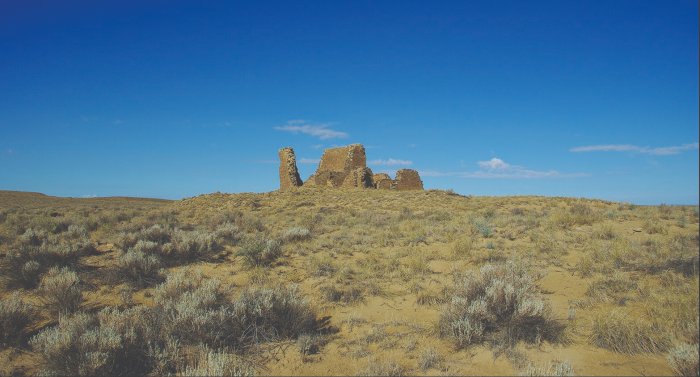Why Were Conch-Shell Trumpets So Important To The Ancient Chacoan Society?

Jan Bartek – AncientPages.com – While excavating Chaco Canyon in northwest New Mexico, archaeologists were a little surprised to find a number of conch-shell trumpets in ancient burials. The nearest source of the shells is about 1,000 km away, so why were they brought by ancient Chacoan society to this site?
Chaco Canyon. Credit: Adobe Stock – MSchneider
The ancient Pueblo world, occupied from AD 850–1150, consisted of smaller Chacoan communities organized around a central great house surrounding the larger Chaco Canyon. Conch-shell trumpets, which are still used in contemporary Pueblo ritual practices, suggest their significance in ancient Chacoan society as well. Previous studies have indicated that sound played an integral role in ritual pageantry within Chaco Canyon. However, it was previously unknown whether communities beyond the canyon also placed importance on auditory experiences.
“Chaco Canyon is surrounded by over one hundred understudied great house communities,” says lead author Professor Ruth Van Dyke from Binghamton University.
“We sought to determine if extra-canyon great house communities demonstrated relationships similar to Chaco Canyon between landscape, community layout, and sound.”
How Did Chaco Canyon Communities Use Conch-Shell Trumpets For Communication?
The pursuit of understanding the acoustic dynamics of ancient civilizations necessitated a rigorous and multidisciplinary approach. To achieve this objective, Professor Van Dyke and a team of researchers from several esteemed institutions in the United States employed the Soundshed Analysis model, developed by co-author K.E. Primeau, to digitally simulate the propagation of sound from a conch-shell trumpet being sounded at a great house in relation to other features within the landscape.
Conch-shell trumpet. Credit: Daderot – Public Domain
The Soundshed Analysis model is a sophisticated computational tool that calculates the distance a sound can travel from a given point, taking into account various factors such as the type of sound and environmental conditions, including elevation and ambient noise levels. In this particular study, the team utilized this model to simulate the sound of a conch from great houses at five Chacoan communities, with the aim of determining whether the sound would reach all habitation sites within the respective community.
The study revealed that if a conch-shell trumpet was blown from the central great house within the Chacoan communities, the sound would have reached nearly all the surrounding settlements. This finding suggests that the ancient Puebloans may have organized their land use and community structures around the sound of trumpets. The trumpet sound was potentially utilized as a signaling mechanism for communal activities, such as religious ceremonies, allowing coordination across the settlements.
Kin Klizhin great house with tower kiva (LA 4935). Credit: Ruth Van Dyke
Professor Van Dyke’s statement draws a parallel between the ancient sound system and the traditional practice of church bells summoning a community to gather for mass. This analogy provides insight into the potential function of the sound system within the Chacoan society. Furthermore, the discovery highlights the need to consider the cultural significance and heritage value of such sites when developing future management strategies for preserving and interpreting Chacoan heritage sites.
See also: More Archaeology News
“Soundscapes were meaningful dimensions of past experiences, landscapes, and environments and are important facets of social interaction in the ancient world,” observes Professor Van Dyke. “Management of archaeological and heritage sites should incorporate consideration of the auditory environment.”
“Soundsheds provide a new and intriguing means for managing and protecting the greater Chacoan landscape: areas of heightened concern for cultural and historic resource protection could be delineated by mapping the spread of sound from the locations of great houses. Federal and state land-management agencies would be able to incorporate this information into decision making, permitting activities and environmental impact analyses. We offer this tool as one of many within a management toolbox. The presence of these areas should be considered in concert with the presence of Tribal treaty rights, endangered species, unique geologic resources, and traditional cultural landscapes and properties, among others.
If we are to understand a Chacoan sense of place, archaeologists must devise creative methods for studying sensory experiences, including soundscapes,” the researchers write in their science paper.
The study was published in the journal Antiquity
Written by Jan Bartek – AncientPages.com Staff Writer







